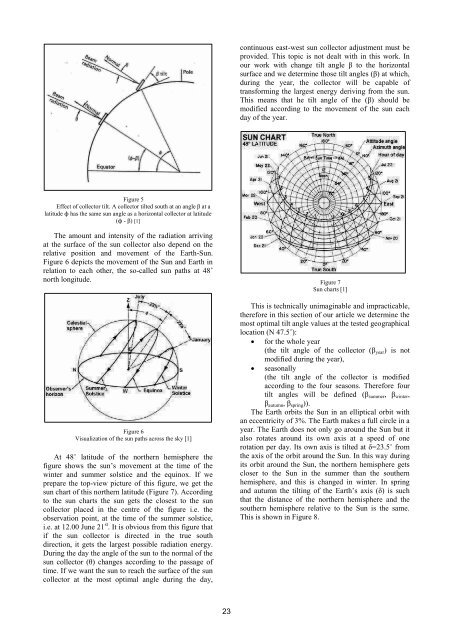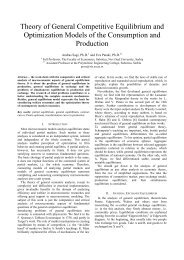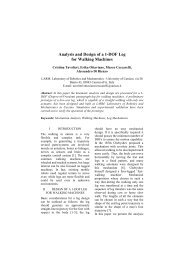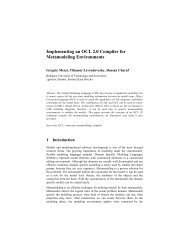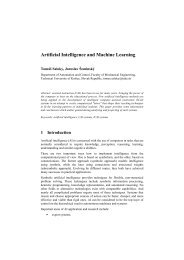Final Program EXPRES 2012 - Conferences
Final Program EXPRES 2012 - Conferences
Final Program EXPRES 2012 - Conferences
- No tags were found...
You also want an ePaper? Increase the reach of your titles
YUMPU automatically turns print PDFs into web optimized ePapers that Google loves.
continuous east-west sun collector adjustment must beprovided. This topic is not dealt with in this work. Inour work with change tilt angle β to the horizontalsurface and we determine those tilt angles (β) at which,during the year, the collector will be capable oftransforming the largest energy deriving from the sun.This means that he tilt angle of the (β) should bemodified according to the movement of the sun eachday of the year.Figure 5Effect of collector tilt. A collector tilted south at an angle β at alatitude ϕ has the same sun angle as a horizontal collector at latitude(ϕ - β) [1]The amount and intensity of the radiation arrivingat the surface of the sun collector also depend on therelative position and movement of the Earth-Sun.Figure 6 depicts the movement of the Sun and Earth inrelation to each other, the so-called sun paths at 48˚north longitude.Figure 6Visualization of the sun paths across the sky [1]At 48˚ latitude of the northern hemisphere thefigure shows the sun’s movement at the time of thewinter and summer solstice and the equinox. If weprepare the top-view picture of this figure, we get thesun chart of this northern latitude (Figure 7). Accordingto the sun charts the sun gets the closest to the suncollector placed in the centre of the figure i.e. theobservation point, at the time of the summer solstice,i.e. at 12.00 June 21 st . It is obvious from this figure thatif the sun collector is directed in the true southdirection, it gets the largest possible radiation energy.During the day the angle of the sun to the normal of thesun collector (θ) changes according to the passage oftime. If we want the sun to reach the surface of the suncollector at the most optimal angle during the day,Figure 7Sun charts [1]This is technically unimaginable and impracticable,therefore in this section of our article we determine themost optimal tilt angle values at the tested geographicallocation (N 47.5˚): for the whole year(the tilt angle of the collector (β year ) is notmodified during the year),seasonally(the tilt angle of the collector is modifiedaccording to the four seasons. Therefore fourtilt angles will be defined (β summer , β winter ,β autumn , β spring )).The Earth orbits the Sun in an elliptical orbit withan eccentricity of 3%. The Earth makes a full circle in ayear. The Earth does not only go around the Sun but italso rotates around its own axis at a speed of onerotation per day. Its own axis is tilted at δ=23.5˚ fromthe axis of the orbit around the Sun. In this way duringits orbit around the Sun, the northern hemisphere getscloser to the Sun in the summer than the southernhemisphere, and this is changed in winter. In springand autumn the tilting of the Earth’s axis (δ) is suchthat the distance of the northern hemisphere and thesouthern hemisphere relative to the Sun is the same.This is shown in Figure 8.23


